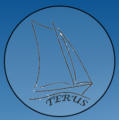
North of Leros island (March-June 2023)

On the 15 of March, we arrived in Leros to prepare for the new season. The trip to Leros was quite
long as the flight to Leros was cancelled twice and finally we had to use the ferry arriving at Leros at 3:30am. After a good rest on the boat, we started to complete the list of tasks to be done.
at 3:30am. After a good rest on the boat, we started to complete the list of tasks to be done. First, we applied some antifouling, cleaned and polished the hull and reconnected all the
First, we applied some antifouling, cleaned and polished the hull and reconnected all the instruments we had disconnected before leaving the boat to limit any damage in case lightning hit
instruments we had disconnected before leaving the boat to limit any damage in case lightning hit the boat during the winter. A few days after Easter, Terus returned to the sea and our first stop
the boat during the winter. A few days after Easter, Terus returned to the sea and our first stop was in the port of Leros where we could finish preparing Terus by replacing the genset priming
was in the port of Leros where we could finish preparing Terus by replacing the genset priming pump and rehoisting the sails. In the Middle of April, we had to wait for a few more days until the
pump and rehoisting the sails. In the Middle of April, we had to wait for a few more days until the weather improved. We wanted southerly winds so we could visit the islands north of Leros.
weather improved. We wanted southerly winds so we could visit the islands north of Leros. However, as the prevailing wind was from the north, we had to wait a few days before we could sail
However, as the prevailing wind was from the north, we had to wait a few days before we could sail  to the islands of Chios, Ikaria, Oinussa and Lesbos. Those islands are still part of the Dodecanese
to the islands of Chios, Ikaria, Oinussa and Lesbos. Those islands are still part of the Dodecanese and are located close to the Turkish coast. Sometimes you have to wait several days, but the
and are located close to the Turkish coast. Sometimes you have to wait several days, but the islands are very interesting destinations as they are very different from the other Greek islands.
islands are very interesting destinations as they are very different from the other Greek islands. Ikaria island
Located 10 miles west of Samos is the island of Ikaria. It has a little harbor that offers good
Ikaria island
Located 10 miles west of Samos is the island of Ikaria. It has a little harbor that offers good protection from the northerly winds. Beside the harbor there is a hot radioactive spring. If you
protection from the northerly winds. Beside the harbor there is a hot radioactive spring. If you want to enjoy the water, no problem, but do not soak for longer than 3 or 4 minutes to limit the
want to enjoy the water, no problem, but do not soak for longer than 3 or 4 minutes to limit the amount of radiation. Further north of the harbor there is a bigger spring that is the main tourist
amount of radiation. Further north of the harbor there is a bigger spring that is the main tourist attraction on the island, but we did not go there.
attraction on the island, but we did not go there.  Chios island
Located 11 km from Turkey with an area of 850 Km², historically, this island has mostly been
Chios island
Located 11 km from Turkey with an area of 850 Km², historically, this island has mostly been occupied by Turks, Ottoman soldiers, Genovese and other colonists. For a time, slavery was legal
occupied by Turks, Ottoman soldiers, Genovese and other colonists. For a time, slavery was legal in Chios which benefited the economy of the island. Since ancient times, Chios has been known for
in Chios which benefited the economy of the island. Since ancient times, Chios has been known for the production of “mastica”, a resin harvested from a particular tree that only grows in the
the production of “mastica”, a resin harvested from a particular tree that only grows in the southern part of Chios. Originally, the gum was used as a medicine to protect the mouth and teeth
southern part of Chios. Originally, the gum was used as a medicine to protect the mouth and teeth as well as avoid bad breath. The right to harvest the valuable resin was often reserved for the
as well as avoid bad breath. The right to harvest the valuable resin was often reserved for the ruling elite and anyone else who tried to engage in trading it could face the death penalty. Several
ruling elite and anyone else who tried to engage in trading it could face the death penalty. Several 
 attempts have been made to cultivate the tree in other places, but for some unknown reason, the
attempts have been made to cultivate the tree in other places, but for some unknown reason, the trees failed to produce the valuable resin. Besides the use of the resin as a medicine it is a
trees failed to produce the valuable resin. Besides the use of the resin as a medicine it is a valuable ingredient in chewing gum and ouzo, the national Greek alcoholic drink. There is also a
valuable ingredient in chewing gum and ouzo, the national Greek alcoholic drink. There is also a drink produced with mastica, but it is not so popular. To collect the resin, small notches are made
drink produced with mastica, but it is not so popular. To collect the resin, small notches are made in the trunk and branches out of which a little resin is secreted. When the resin dries out it often
in the trunk and branches out of which a little resin is secreted. When the resin dries out it often falls on the ground. The farmers growing the trees work all year long on their land to make sure
falls on the ground. The farmers growing the trees work all year long on their land to make sure that the ground under the trees remains clean so that the little drops of resin can be gathered
that the ground under the trees remains clean so that the little drops of resin can be gathered easily. Once gathered, a lot of time is needed to clean the product, which today is still done
easily. Once gathered, a lot of time is needed to clean the product, which today is still done manually. There is a museum that explains very well all about the cultivation of mastica and I highly
manually. There is a museum that explains very well all about the cultivation of mastica and I highly recommend you visit it. Not far away from the museum you can visit the village of Pyrgi. This
recommend you visit it. Not far away from the museum you can visit the village of Pyrgi. This village has strange looking houses as they are white with geometric designs on the facades. It is
village has strange looking houses as they are white with geometric designs on the facades. It is certainly very original.
certainly very original.
 As explained, Chios has often been invaded, but the worst invasion was in 1822 by the Ottomans
As explained, Chios has often been invaded, but the worst invasion was in 1822 by the Ottomans  when they killed 25,000 people and captured 45,000 people to sell as slaves. The Ottomans were
when they killed 25,000 people and captured 45,000 people to sell as slaves. The Ottomans were upset by the fact that the people of Chios refused to join Turkey. If today the Greek people do
upset by the fact that the people of Chios refused to join Turkey. If today the Greek people do not like the Turks, it is partly because of this massacre from which only 15,000 people managed to
not like the Turks, it is partly because of this massacre from which only 15,000 people managed to escape. If there was one thing that disappointed us in Chios it was the bad condition of the port
escape. If there was one thing that disappointed us in Chios it was the bad condition of the port and the fact that it is located quite far from the city center. The harbor is free and offers very
and the fact that it is located quite far from the city center. The harbor is free and offers very good protection from the northerly winds. There is also a good supermarket where you can buy all
good protection from the northerly winds. There is also a good supermarket where you can buy all food related items, but for the rest, such as to rent a car, buy fresh fish etc.… you need to go to
food related items, but for the rest, such as to rent a car, buy fresh fish etc.… you need to go to the commercial harbor. If you prefer to wait for favorable winds you can go to the island of
the commercial harbor. If you prefer to wait for favorable winds you can go to the island of Oinoussa. The island is located a few miles from the port of Chios. It is very nice, but the island
Oinoussa. The island is located a few miles from the port of Chios. It is very nice, but the island only has a bakery, so if you need groceries you have to go back to Chios. I am sure there is a
only has a bakery, so if you need groceries you have to go back to Chios. I am sure there is a shuttle, but we did not inquire about it. Oinoussa has a little maritime museum that we visited
shuttle, but we did not inquire about it. Oinoussa has a little maritime museum that we visited where you can see several nice model boats all made of ivory.
where you can see several nice model boats all made of ivory.
 Lesbos Island
After having waited for several days on Chios because of the northerly winds, we had a little
Lesbos Island
After having waited for several days on Chios because of the northerly winds, we had a little window of southerly winds which we took advantage of to move to the island of Lesbos. Our first
window of southerly winds which we took advantage of to move to the island of Lesbos. Our first attempt failed because the wind changed direction soon after our departure, but two days later it
attempt failed because the wind changed direction soon after our departure, but two days later it was much better. Lesbos is a big island, and you need a car to explore it. In the west of the island
was much better. Lesbos is a big island, and you need a car to explore it. In the west of the island there is a big area where you can see a lot of fossilized trees that are 18 million years old. At that
there is a big area where you can see a lot of fossilized trees that are 18 million years old. At that time, a big volcanic eruption covered the western part of the island with a big layer of dust. Many
time, a big volcanic eruption covered the western part of the island with a big layer of dust. Many of the trees that were buried under the dust became fossils and when you travel in that area you
of the trees that were buried under the dust became fossils and when you travel in that area you see very many fossilized trees. Today since roads are being constructed, it is not rare for new
see very many fossilized trees. Today since roads are being constructed, it is not rare for new fossilized trees to be discovered. There is a little museum that explains very well the formation of
fossilized trees to be discovered. There is a little museum that explains very well the formation of those fossilized trees and it contains a few trunks.
those fossilized trees and it contains a few trunks. 
 While you drive across the island you notice that the cultivation of olives is the agricultural
While you drive across the island you notice that the cultivation of olives is the agricultural activity on the island. In the past, the oil was mainly used to make soap, but today a lot of the old
activity on the island. In the past, the oil was mainly used to make soap, but today a lot of the old soap factories have been abandoned. Luckily, one oil press factory has been beautifully restored
soap factories have been abandoned. Luckily, one oil press factory has been beautifully restored and is open for visitors. This olive oil museum allows you to understand the oil extraction process.
and is open for visitors. This olive oil museum allows you to understand the oil extraction process. The machines used to extract the oil have been repaired well and are in good working order. Even
The machines used to extract the oil have been repaired well and are in good working order. Even the steam machine that powered the plant is working. From the steam machine you see the big
the steam machine that powered the plant is working. From the steam machine you see the big belts in the ceiling that transferred the power to the rest of the plant. We were surprised to
belts in the ceiling that transferred the power to the rest of the plant. We were surprised to learn that after they were pressed to extract the oil, the remaining olive skins were used as
learn that after they were pressed to extract the oil, the remaining olive skins were used as combustible fuel in the steam machine. In other words, the factory was carbon neutral before its
combustible fuel in the steam machine. In other words, the factory was carbon neutral before its time. During the winter months the factory could grind grain to produce flour and keep providing
time. During the winter months the factory could grind grain to produce flour and keep providing jobs for the workers.
jobs for the workers.
 After the factory tour, we went north to visit the village of Methymna. Above the village there is
After the factory tour, we went north to visit the village of Methymna. Above the village there is a fort built in the 14th century, that protected the village. It was ideally located to watch out for
a fort built in the 14th century, that protected the village. It was ideally located to watch out for any approaching Turkisharmy. Below the fortress there a some nice hotelsif you wish to stay
any approaching Turkisharmy. Below the fortress there a some nice hotelsif you wish to stay longer.
But a must to visit in Lesbos are the Ouzo factories. Lesbos has 2 inner seas and around them
longer.
But a must to visit in Lesbos are the Ouzo factories. Lesbos has 2 inner seas and around them there is a particular Aniseed plant, with a particular taste, that grows only there. This particular
there is a particular Aniseed plant, with a particular taste, that grows only there. This particular aniseed is the basic ingredient of ouzo, the national Greek liquor. The plant is smaller than other
aniseed is the basic ingredient of ouzo, the national Greek liquor. The plant is smaller than other aniseed plants found in the rest of Europe. We visited two factories, and it was
aniseed plants found in the rest of Europe. We visited two factories, and it was
 really interesting to see the manufacturing process. The first plant was closed to visitors, but we
really interesting to see the manufacturing process. The first plant was closed to visitors, but we were lucky, as the guide decided to explain to us the Ouzo making process. We could not visit the
were lucky, as the guide decided to explain to us the Ouzo making process. We could not visit the production area, but the explanation we were given in the museum was very interesting. To make
production area, but the explanation we were given in the museum was very interesting. To make Ouzo you need a large number of ingredients, and the recipe is more than 100 years old and hidden
Ouzo you need a large number of ingredients, and the recipe is more than 100 years old and hidden in vaults. To limit variations in the taste from year to year, they mix 3 years’ worth of ingredients
in vaults. To limit variations in the taste from year to year, they mix 3 years’ worth of ingredients together. Among the ingredients are aniseed, cloves, mastika, mint, salt and many other things. In
together. Among the ingredients are aniseed, cloves, mastika, mint, salt and many other things. In the factory they produce different kinds of Ouzo with different levels of alcohol content, up to
the factory they produce different kinds of Ouzo with different levels of alcohol content, up to 50%. The second factory that we visited did allow us to visit the production area and the bottling
50%. The second factory that we visited did allow us to visit the production area and the bottling line. Needles to say, we thanked the factories by purchasing some bottles of Ouzo and since we
line. Needles to say, we thanked the factories by purchasing some bottles of Ouzo and since we had a good impression we find that it tastes very good.
had a good impression we find that it tastes very good. 
 But we still don’t know what is the best way to drink Ouzo. Some say dry, while others recommend
But we still don’t know what is the best way to drink Ouzo. Some say dry, while others recommend with ice and a little bit water. So, I recommend that try both ways and then stick to the one you
with ice and a little bit water. So, I recommend that try both ways and then stick to the one you prefer. To make Ouzo a large quantity of synthetic alcohol is required as other alcohol produced
prefer. To make Ouzo a large quantity of synthetic alcohol is required as other alcohol produced from fermentation always has a particular taste that alters the normal Ouzo taste.During our stay
from fermentation always has a particular taste that alters the normal Ouzo taste.During our stay in Leros, we stayed in the main harbor when we needed a car, but otherwise we went to the inner
in Leros, we stayed in the main harbor when we needed a car, but otherwise we went to the inner seas were it was extremely quiet. Along the shore you can see some abandoned oil factories
seas were it was extremely quiet. Along the shore you can see some abandoned oil factories serving as testimony to the old soap industry.
serving as testimony to the old soap industry. Samos island
We had already visited Samos, but we decided to return to meet some Belgian friends in the port
Samos island
We had already visited Samos, but we decided to return to meet some Belgian friends in the port of Maratocampos located on the south west side of Samos. This harbor is well protected and the
of Maratocampos located on the south west side of Samos. This harbor is well protected and the village around the harbor is very quiet. There are two places where you can moor. If you tie up to
village around the harbor is very quiet. There are two places where you can moor. If you tie up to the pontoon at the front of the entrance, you are safe unless the wind comes from the south. The
the pontoon at the front of the entrance, you are safe unless the wind comes from the south. The place offers water and electricity. If you go to the marina on the west side, you can find a place
place offers water and electricity. If you go to the marina on the west side, you can find a place protected from all winds and can enjoy showers and washing machines. However, we heard a rumor
protected from all winds and can enjoy showers and washing machines. However, we heard a rumor that in the future the harbor will be made available for ferries to drop passengers and cars. We
that in the future the harbor will be made available for ferries to drop passengers and cars. We hope that this will not destroy the charm of the port of Maratocampo.
hope that this will not destroy the charm of the port of Maratocampo.
 at 3:30am. After a good rest on the boat, we started to complete the list of tasks to be done.
at 3:30am. After a good rest on the boat, we started to complete the list of tasks to be done. First, we applied some antifouling, cleaned and polished the hull and reconnected all the
First, we applied some antifouling, cleaned and polished the hull and reconnected all the instruments we had disconnected before leaving the boat to limit any damage in case lightning hit
instruments we had disconnected before leaving the boat to limit any damage in case lightning hit the boat during the winter. A few days after Easter, Terus returned to the sea and our first stop
the boat during the winter. A few days after Easter, Terus returned to the sea and our first stop was in the port of Leros where we could finish preparing Terus by replacing the genset priming
was in the port of Leros where we could finish preparing Terus by replacing the genset priming pump and rehoisting the sails. In the Middle of April, we had to wait for a few more days until the
pump and rehoisting the sails. In the Middle of April, we had to wait for a few more days until the weather improved. We wanted southerly winds so we could visit the islands north of Leros.
weather improved. We wanted southerly winds so we could visit the islands north of Leros. However, as the prevailing wind was from the north, we had to wait a few days before we could sail
However, as the prevailing wind was from the north, we had to wait a few days before we could sail  to the islands of Chios, Ikaria, Oinussa and Lesbos. Those islands are still part of the Dodecanese
to the islands of Chios, Ikaria, Oinussa and Lesbos. Those islands are still part of the Dodecanese and are located close to the Turkish coast. Sometimes you have to wait several days, but the
and are located close to the Turkish coast. Sometimes you have to wait several days, but the islands are very interesting destinations as they are very different from the other Greek islands.
islands are very interesting destinations as they are very different from the other Greek islands. Ikaria island
Located 10 miles west of Samos is the island of Ikaria. It has a little harbor that offers good
Ikaria island
Located 10 miles west of Samos is the island of Ikaria. It has a little harbor that offers good protection from the northerly winds. Beside the harbor there is a hot radioactive spring. If you
protection from the northerly winds. Beside the harbor there is a hot radioactive spring. If you want to enjoy the water, no problem, but do not soak for longer than 3 or 4 minutes to limit the
want to enjoy the water, no problem, but do not soak for longer than 3 or 4 minutes to limit the amount of radiation. Further north of the harbor there is a bigger spring that is the main tourist
amount of radiation. Further north of the harbor there is a bigger spring that is the main tourist attraction on the island, but we did not go there.
attraction on the island, but we did not go there.  Chios island
Located 11 km from Turkey with an area of 850 Km², historically, this island has mostly been
Chios island
Located 11 km from Turkey with an area of 850 Km², historically, this island has mostly been occupied by Turks, Ottoman soldiers, Genovese and other colonists. For a time, slavery was legal
occupied by Turks, Ottoman soldiers, Genovese and other colonists. For a time, slavery was legal in Chios which benefited the economy of the island. Since ancient times, Chios has been known for
in Chios which benefited the economy of the island. Since ancient times, Chios has been known for the production of “mastica”, a resin harvested from a particular tree that only grows in the
the production of “mastica”, a resin harvested from a particular tree that only grows in the southern part of Chios. Originally, the gum was used as a medicine to protect the mouth and teeth
southern part of Chios. Originally, the gum was used as a medicine to protect the mouth and teeth as well as avoid bad breath. The right to harvest the valuable resin was often reserved for the
as well as avoid bad breath. The right to harvest the valuable resin was often reserved for the ruling elite and anyone else who tried to engage in trading it could face the death penalty. Several
ruling elite and anyone else who tried to engage in trading it could face the death penalty. Several 
 attempts have been made to cultivate the tree in other places, but for some unknown reason, the
attempts have been made to cultivate the tree in other places, but for some unknown reason, the trees failed to produce the valuable resin. Besides the use of the resin as a medicine it is a
trees failed to produce the valuable resin. Besides the use of the resin as a medicine it is a valuable ingredient in chewing gum and ouzo, the national Greek alcoholic drink. There is also a
valuable ingredient in chewing gum and ouzo, the national Greek alcoholic drink. There is also a drink produced with mastica, but it is not so popular. To collect the resin, small notches are made
drink produced with mastica, but it is not so popular. To collect the resin, small notches are made in the trunk and branches out of which a little resin is secreted. When the resin dries out it often
in the trunk and branches out of which a little resin is secreted. When the resin dries out it often falls on the ground. The farmers growing the trees work all year long on their land to make sure
falls on the ground. The farmers growing the trees work all year long on their land to make sure that the ground under the trees remains clean so that the little drops of resin can be gathered
that the ground under the trees remains clean so that the little drops of resin can be gathered easily. Once gathered, a lot of time is needed to clean the product, which today is still done
easily. Once gathered, a lot of time is needed to clean the product, which today is still done manually. There is a museum that explains very well all about the cultivation of mastica and I highly
manually. There is a museum that explains very well all about the cultivation of mastica and I highly recommend you visit it. Not far away from the museum you can visit the village of Pyrgi. This
recommend you visit it. Not far away from the museum you can visit the village of Pyrgi. This village has strange looking houses as they are white with geometric designs on the facades. It is
village has strange looking houses as they are white with geometric designs on the facades. It is certainly very original.
certainly very original.
 As explained, Chios has often been invaded, but the worst invasion was in 1822 by the Ottomans
As explained, Chios has often been invaded, but the worst invasion was in 1822 by the Ottomans  when they killed 25,000 people and captured 45,000 people to sell as slaves. The Ottomans were
when they killed 25,000 people and captured 45,000 people to sell as slaves. The Ottomans were upset by the fact that the people of Chios refused to join Turkey. If today the Greek people do
upset by the fact that the people of Chios refused to join Turkey. If today the Greek people do not like the Turks, it is partly because of this massacre from which only 15,000 people managed to
not like the Turks, it is partly because of this massacre from which only 15,000 people managed to escape. If there was one thing that disappointed us in Chios it was the bad condition of the port
escape. If there was one thing that disappointed us in Chios it was the bad condition of the port and the fact that it is located quite far from the city center. The harbor is free and offers very
and the fact that it is located quite far from the city center. The harbor is free and offers very good protection from the northerly winds. There is also a good supermarket where you can buy all
good protection from the northerly winds. There is also a good supermarket where you can buy all food related items, but for the rest, such as to rent a car, buy fresh fish etc.… you need to go to
food related items, but for the rest, such as to rent a car, buy fresh fish etc.… you need to go to the commercial harbor. If you prefer to wait for favorable winds you can go to the island of
the commercial harbor. If you prefer to wait for favorable winds you can go to the island of Oinoussa. The island is located a few miles from the port of Chios. It is very nice, but the island
Oinoussa. The island is located a few miles from the port of Chios. It is very nice, but the island only has a bakery, so if you need groceries you have to go back to Chios. I am sure there is a
only has a bakery, so if you need groceries you have to go back to Chios. I am sure there is a shuttle, but we did not inquire about it. Oinoussa has a little maritime museum that we visited
shuttle, but we did not inquire about it. Oinoussa has a little maritime museum that we visited where you can see several nice model boats all made of ivory.
where you can see several nice model boats all made of ivory.
 Lesbos Island
After having waited for several days on Chios because of the northerly winds, we had a little
Lesbos Island
After having waited for several days on Chios because of the northerly winds, we had a little window of southerly winds which we took advantage of to move to the island of Lesbos. Our first
window of southerly winds which we took advantage of to move to the island of Lesbos. Our first attempt failed because the wind changed direction soon after our departure, but two days later it
attempt failed because the wind changed direction soon after our departure, but two days later it was much better. Lesbos is a big island, and you need a car to explore it. In the west of the island
was much better. Lesbos is a big island, and you need a car to explore it. In the west of the island there is a big area where you can see a lot of fossilized trees that are 18 million years old. At that
there is a big area where you can see a lot of fossilized trees that are 18 million years old. At that time, a big volcanic eruption covered the western part of the island with a big layer of dust. Many
time, a big volcanic eruption covered the western part of the island with a big layer of dust. Many of the trees that were buried under the dust became fossils and when you travel in that area you
of the trees that were buried under the dust became fossils and when you travel in that area you see very many fossilized trees. Today since roads are being constructed, it is not rare for new
see very many fossilized trees. Today since roads are being constructed, it is not rare for new fossilized trees to be discovered. There is a little museum that explains very well the formation of
fossilized trees to be discovered. There is a little museum that explains very well the formation of those fossilized trees and it contains a few trunks.
those fossilized trees and it contains a few trunks. 
 While you drive across the island you notice that the cultivation of olives is the agricultural
While you drive across the island you notice that the cultivation of olives is the agricultural activity on the island. In the past, the oil was mainly used to make soap, but today a lot of the old
activity on the island. In the past, the oil was mainly used to make soap, but today a lot of the old soap factories have been abandoned. Luckily, one oil press factory has been beautifully restored
soap factories have been abandoned. Luckily, one oil press factory has been beautifully restored and is open for visitors. This olive oil museum allows you to understand the oil extraction process.
and is open for visitors. This olive oil museum allows you to understand the oil extraction process. The machines used to extract the oil have been repaired well and are in good working order. Even
The machines used to extract the oil have been repaired well and are in good working order. Even the steam machine that powered the plant is working. From the steam machine you see the big
the steam machine that powered the plant is working. From the steam machine you see the big belts in the ceiling that transferred the power to the rest of the plant. We were surprised to
belts in the ceiling that transferred the power to the rest of the plant. We were surprised to learn that after they were pressed to extract the oil, the remaining olive skins were used as
learn that after they were pressed to extract the oil, the remaining olive skins were used as combustible fuel in the steam machine. In other words, the factory was carbon neutral before its
combustible fuel in the steam machine. In other words, the factory was carbon neutral before its time. During the winter months the factory could grind grain to produce flour and keep providing
time. During the winter months the factory could grind grain to produce flour and keep providing jobs for the workers.
jobs for the workers.
 After the factory tour, we went north to visit the village of Methymna. Above the village there is
After the factory tour, we went north to visit the village of Methymna. Above the village there is a fort built in the 14th century, that protected the village. It was ideally located to watch out for
a fort built in the 14th century, that protected the village. It was ideally located to watch out for any approaching Turkisharmy. Below the fortress there a some nice hotelsif you wish to stay
any approaching Turkisharmy. Below the fortress there a some nice hotelsif you wish to stay longer.
But a must to visit in Lesbos are the Ouzo factories. Lesbos has 2 inner seas and around them
longer.
But a must to visit in Lesbos are the Ouzo factories. Lesbos has 2 inner seas and around them there is a particular Aniseed plant, with a particular taste, that grows only there. This particular
there is a particular Aniseed plant, with a particular taste, that grows only there. This particular aniseed is the basic ingredient of ouzo, the national Greek liquor. The plant is smaller than other
aniseed is the basic ingredient of ouzo, the national Greek liquor. The plant is smaller than other aniseed plants found in the rest of Europe. We visited two factories, and it was
aniseed plants found in the rest of Europe. We visited two factories, and it was
 really interesting to see the manufacturing process. The first plant was closed to visitors, but we
really interesting to see the manufacturing process. The first plant was closed to visitors, but we were lucky, as the guide decided to explain to us the Ouzo making process. We could not visit the
were lucky, as the guide decided to explain to us the Ouzo making process. We could not visit the production area, but the explanation we were given in the museum was very interesting. To make
production area, but the explanation we were given in the museum was very interesting. To make Ouzo you need a large number of ingredients, and the recipe is more than 100 years old and hidden
Ouzo you need a large number of ingredients, and the recipe is more than 100 years old and hidden in vaults. To limit variations in the taste from year to year, they mix 3 years’ worth of ingredients
in vaults. To limit variations in the taste from year to year, they mix 3 years’ worth of ingredients together. Among the ingredients are aniseed, cloves, mastika, mint, salt and many other things. In
together. Among the ingredients are aniseed, cloves, mastika, mint, salt and many other things. In the factory they produce different kinds of Ouzo with different levels of alcohol content, up to
the factory they produce different kinds of Ouzo with different levels of alcohol content, up to 50%. The second factory that we visited did allow us to visit the production area and the bottling
50%. The second factory that we visited did allow us to visit the production area and the bottling line. Needles to say, we thanked the factories by purchasing some bottles of Ouzo and since we
line. Needles to say, we thanked the factories by purchasing some bottles of Ouzo and since we had a good impression we find that it tastes very good.
had a good impression we find that it tastes very good. 
 But we still don’t know what is the best way to drink Ouzo. Some say dry, while others recommend
But we still don’t know what is the best way to drink Ouzo. Some say dry, while others recommend with ice and a little bit water. So, I recommend that try both ways and then stick to the one you
with ice and a little bit water. So, I recommend that try both ways and then stick to the one you prefer. To make Ouzo a large quantity of synthetic alcohol is required as other alcohol produced
prefer. To make Ouzo a large quantity of synthetic alcohol is required as other alcohol produced from fermentation always has a particular taste that alters the normal Ouzo taste.During our stay
from fermentation always has a particular taste that alters the normal Ouzo taste.During our stay in Leros, we stayed in the main harbor when we needed a car, but otherwise we went to the inner
in Leros, we stayed in the main harbor when we needed a car, but otherwise we went to the inner seas were it was extremely quiet. Along the shore you can see some abandoned oil factories
seas were it was extremely quiet. Along the shore you can see some abandoned oil factories serving as testimony to the old soap industry.
serving as testimony to the old soap industry. Samos island
We had already visited Samos, but we decided to return to meet some Belgian friends in the port
Samos island
We had already visited Samos, but we decided to return to meet some Belgian friends in the port of Maratocampos located on the south west side of Samos. This harbor is well protected and the
of Maratocampos located on the south west side of Samos. This harbor is well protected and the village around the harbor is very quiet. There are two places where you can moor. If you tie up to
village around the harbor is very quiet. There are two places where you can moor. If you tie up to the pontoon at the front of the entrance, you are safe unless the wind comes from the south. The
the pontoon at the front of the entrance, you are safe unless the wind comes from the south. The place offers water and electricity. If you go to the marina on the west side, you can find a place
place offers water and electricity. If you go to the marina on the west side, you can find a place protected from all winds and can enjoy showers and washing machines. However, we heard a rumor
protected from all winds and can enjoy showers and washing machines. However, we heard a rumor that in the future the harbor will be made available for ferries to drop passengers and cars. We
that in the future the harbor will be made available for ferries to drop passengers and cars. We hope that this will not destroy the charm of the port of Maratocampo.
hope that this will not destroy the charm of the port of Maratocampo.
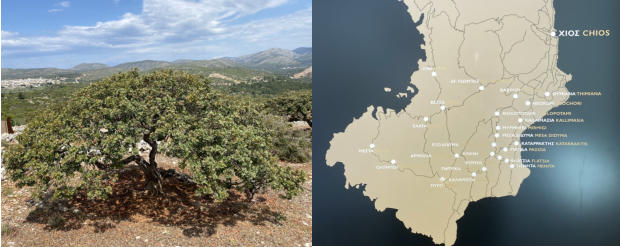

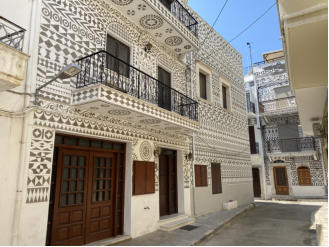

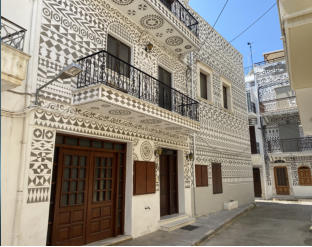
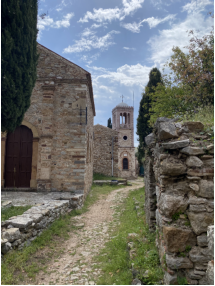
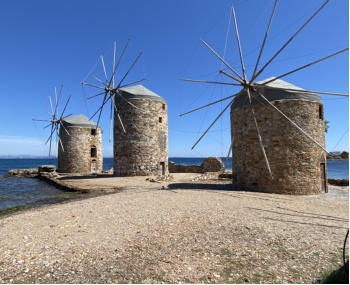
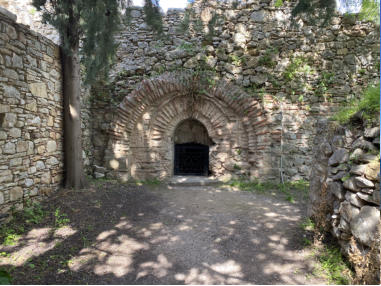




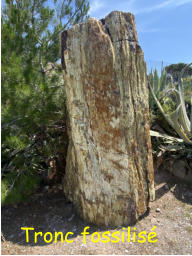


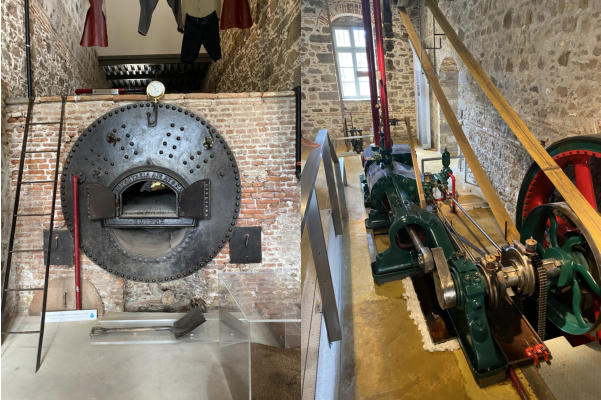

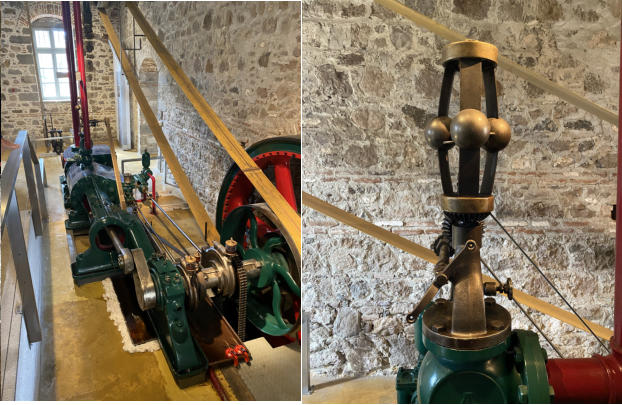

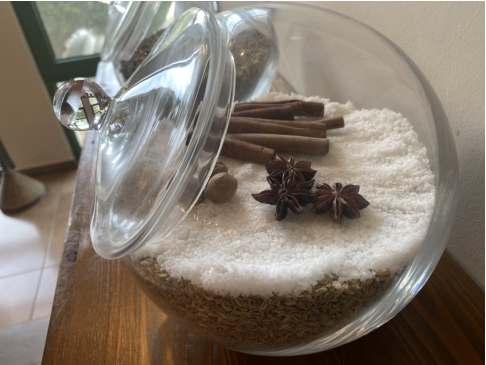

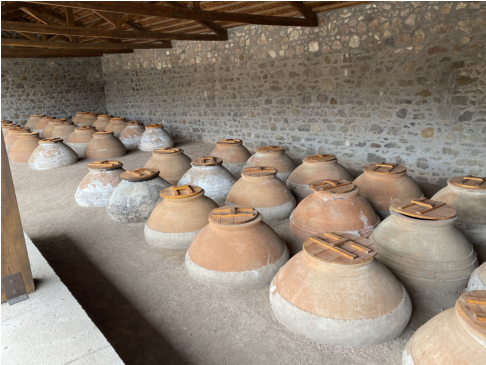



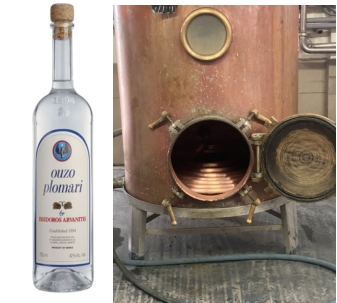



Our Journey: 2023









